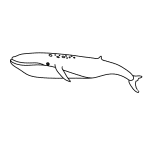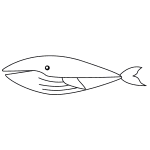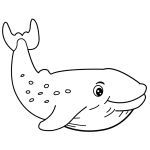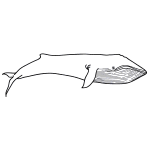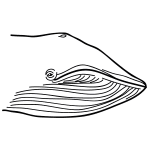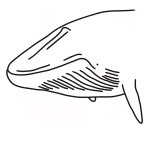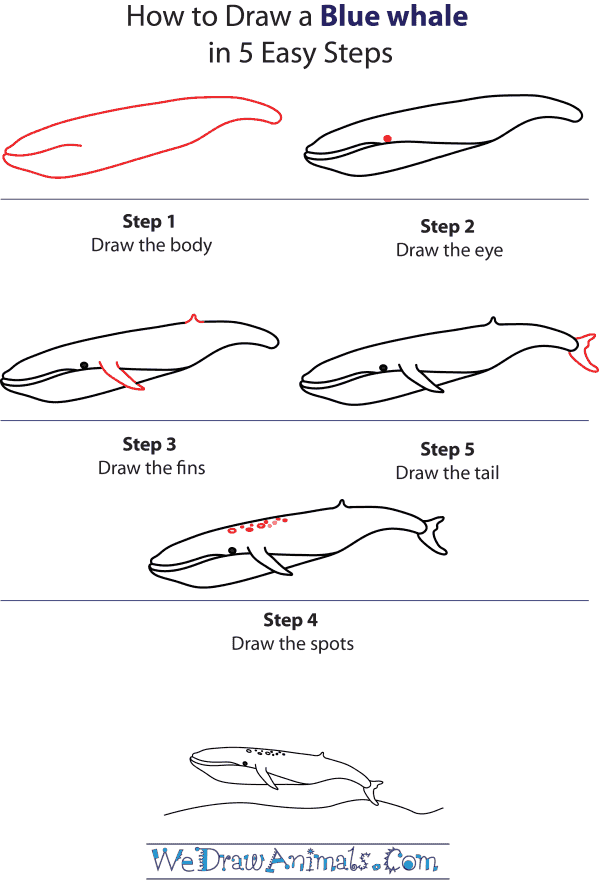In this quick tutorial you'll learn how to draw a Blue Whale in 5 easy steps - great for kids and novice artists.
The images above represent how your finished drawing is going to look and the steps involved.
Below are the individual steps - you can click on each one for a High Resolution printable PDF version.
At the bottom you can read some interesting facts about the Blue Whale.
Make sure you also check out any of the hundreds of drawing tutorials grouped by category.
How to Draw a Blue Whale - Step-by-Step Tutorial
Step 1: Let's start by drawing the blue whale's body. Blue whales are very long and can weigh up to 400,000 pounds! Then draw a line starting at the left side of the body and stopping about a quarter of the way across. This will be the whale's mouth.
Step 2: Draw another line for the bottom of the whale's mouth that extends all the way to the bottom of the whale's body. Then draw the eye at the end of the mouth.
Step 3: Next, draw the fins. The first fin is on the side of the body and is long and narrow. The second fin is a short point on the top of the body, closer to the tail.
Step 4: Then draw the tail. The tail is a large flipper at the end of the body and the blue whale uses it to propel itself through the water.
Step 5: Your last step is to draw the spots on the whale's back. Now you're ready to color your whale and draw its surroundings in the water! Activity: Blue whales are huge, even though they can only swallow small animals like krill. Have your students draw smaller fish next to the whale to show how big it is.
Interesting Facts about Blue Whales
The blue whale is the largest living animal in the world! In fact, it is the largest animal ever to have existed on this planet. A baby blue whale, called a calf, weighs two tons at birth, and every day of its first year it gains 200 pounds. Blue whales are mammals. They live in all seven of the world’s oceans.
Did you know?
- Blue whales eat krill, which are similar to shrimp. An adult blue whale can eat up to 40 million krill a day.
- In the wild, blue whales can live to be 80 to 90 years old.
- On average, blue whales grow to be 82 to 105 feet long and weigh about 200 tons.
- A blue whale’s tongue alone can weigh two or three tons!
- Although the blue whale’s mouth is quite large, it cannot swallow anything larger than a beach ball.
- Blue whales tend to travel at a pace of five miles per hour, but they can move as fast as 20 miles per hour.
Blue whales are an endangered species. There are only a few thousand left in the world. They used to be hunted by people called whalers for their oil and fat called blubber. Laws now protect blue whales from being hunted.

